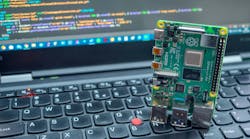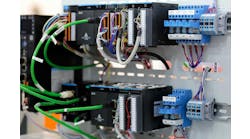New players are coming into the programmable logic controller (PLC)/programmable automation controller (PAC) market all the time. Some are CoDeSys IEC-61131 based, some are C/C++ and/or Python. Suppliers have the ability to add in C/C++ routines. For OEM-based solutions, where no one will be troubleshooting the application, it won’t matter much.
But for solutions used in industrial applications where people interfacing is needed, the C/C++ implementation wouldn’t be optimal.
So, the software component of these new entries boils down to CoDeSys for factory-floor and machine-building projects, but it’s the hardware that has me wondering.
Raspberry Pi- and Arduino-based systems are becoming more prevalent, and their form factors are also not the norm.
I was the lucky recipient of a Portenta Machine Control PLC in a draw. It is an Arduino-based PLC used for machine control. When I first started using it, the language was foreign and unique. It took some getting used to, but I am far from an expert. The Arduino community has since released a CoDeSys IEC front end for the board, which I have played with a bit.
The hardware itself is a DIN rail-mounted single board with eight digital inputs and eight digital outputs and 12 programmable digital inputs/outputs. It also has an encoder input, analog I/O, RTD/thermocouple input and multiple communication ports for HMI interfacing. It also supports Ethernet and Wi-Fi, along with USB.
I cannot imagine anyone grabbing a laptop and connecting with a USB cable to evaluate the code to troubleshoot the application, however. The CoDeSys implementation is Portenta-specific, and, while I haven’t looked under the hood, I suspect that the implementation is minimalistic.
The product is being marketed as an IIoT and edge computing solution which can be exposed to the cloud. It certainly seems like a complete solution for monitoring and control, but not really suited for human interfacing when something goes wrong.
Inductive Automation’s Ignition Edge product can be implemented to access the database onboard the Portenta.
Raspberry Pi is another hardware platform which is becoming very popular in industrial settings. As a 64-bit quad-core processor that can run multiple operating systems including Windows, it may provide for a much different experience than an Arduino solution.
This platform is being packaged by multiple vendors as a low-cost IIoT system which has connectivity to various off-board devices and communication protocols for data and control access.
So, Arduino and Pi devices are readily available and are very inexpensive with programming solutions that can be varied yet commonplace, such as IEC 61131 languages.
The I/O looks rugged enough, and the communication possibilities are endless. Cell systems, Wi-Fi and the ability to interface to various devices allows these brick type of solutions to be used in many applications.
One Raspberry Pi vendor in particular supports CoDeSys and Node-Red, along with Python with cloud-based interfaces. This can be very attractive to machine builders who use traditional PLCs for control and local interfacing, but can then add a Pi interface running data-acquisition software over MQTT to Azure for global data access for predictive maintenance data points. Legacy solutions can be modernized without touching the existing hardware or software, supporting all protocols, including OPC UA. You would be able to access any data in any system from this Pi device inexpensively.
Traditional PLC suppliers are also wandering into this arena. The main issue here is cost. An Arduino-based system may be deemed to be less expensive. Paying $69 for a CPU controller in a case and having the ability to interface with I/O looks attractive and has support.
The programming language however in the case is limited to C/C++, which may be just fine for some depending on the application.
Cindy Hollenbeck from SoftPLC indicated that “proven industry software and support” has value rather than trying to assemble/build a Pi/Arduino system yourself.
The world of microelectronics is starting to gain a foothold in the industrial marketplace for PLCs and PACs. Enterprising engineers are packaging these units in familiar form factors which make them a bit familiar, but in fact they are not.
An industrial electrician will not have the foundation as such to interface with these devices, generally speaking. OEM machine builders may benefit from these lower-cost entry units if their systems are closed and the engineering department has the resources to implement these devices. The ability to gather data and feed to the cloud is in itself an advantage in the PLC world. HMI applications have this capability, but if you are looking for a slick inexpensive cloud IIoT controller, you may have found it.





